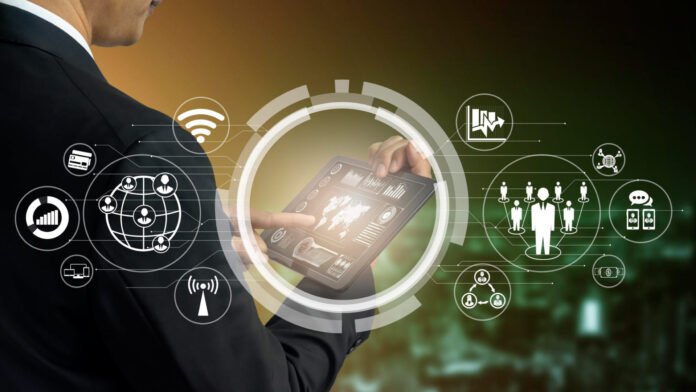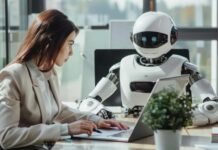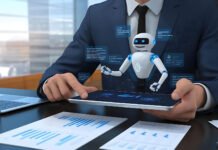Smart HR was not meant to make hiring and safety better, but rather an optimization of the same. Nevertheless, in 2025, there are numerous businesses that continue to use stale hiring technology and employee safety tools that do not conceptualize the contemporary best risks, such as talent misalignment, systemic bias, mental fatigue, and the loss of trust. Smart HR applications offer a way out: with smart algorithms and sustained data feedback loops, soon to be the norm. But is it?
There is a decisive choice that executives are confronted with: should they embrace minor digital transformations, or should they insist on a complete restructuring of recruitment and protection? To revolutionize your hiring platform and workplace safety protocols, HR applications must go beyond automation. They need to build strategic resilience.
Table of Contents:
1. Hiring Smarter Isn’t About Speed. It’s About Strategic Fit.
2. Can AI Reduce Hiring Bias—or Just Reinforce It Faster?
3. Beyond Compliance: Redefining Workplace Safety for the Cognitive Era
4. Data-Rich, Trust-Poor? Why Employee Trust Is the Missing KPI
5. From Monitoring to Empowerment: Rethinking Workforce Surveillance
6. Future-Ready HR Needs a Chief Algorithms Officer
Don’t Just Automate HR. Rethink It Entirely.
1. Hiring Smarter Isn’t About Speed. It’s About Strategic Fit.
The modern recruiting solutions are focusing on time-to-fill, rather than time-to-thrive. There is a need to redesign smart HR to align the talent acquisition process with long-term organizational performance. This encompasses the incorporation of predictive behavioral tests, cultural fit models, and scenario-based tests.
Strategic hiring platforms are key where resumes will be used to meet a job description, but personalities will be used to meet the mission. By 2026, leaders in the industry will focus on adaptive hiring algorithms that can help in the identification of mission-related talent pipelines rather than matching generic resumes.
2. Can AI Reduce Hiring Bias—or Just Reinforce It Faster?
AI in HR is a double-edged sword. If left untended, it will cement legacy bias quicker than any human recruiter. Clever HR apps need to be created with intrinsic bias discovery, continuous algorithm reviews, and explainability features.
Companies that approach hiring and safety as compliance necessities instead of as fundamental strategic imperatives will get left behind. The future requires hiring platforms that are transparent by design and inclusive by default.
3. Beyond Compliance: Redefining Workplace Safety for the Cognitive Era
Occupational safety no longer means only hard hats and danger signs. It has to incorporate psychological health, cognitive workload measurement, and predictive fatigue analysis.
Smart HR applications for safety are already combining biometric sensors, AI-powered safety applications, and employee sentiment data to flag risks before incidents occur. By 2027, the most forward-looking organizations will embed safety protocols directly into employee experience journeys—not just into compliance checklists.
4. Data-Rich, Trust-Poor? Why Employee Trust Is the Missing KPI
Add-on data doesn’t necessarily translate to better decisions—particularly if your workforce doesn’t have faith in how that information is being applied. As workplace safety becomes increasingly dependent on ongoing monitoring, businesses have to establish a solid boundary between support and surveillance.
Workplace safety with HR applications must incorporate privacy-by-design principles. Employees must know how their data is being used, who controls it, and how it benefits them.
5. From Monitoring to Empowerment: Rethinking Workforce Surveillance
Post-pandemic workforce monitoring tools were deployed in haste. In 2025, the real question is: are these tools enhancing autonomy or undermining morale?
Ethical safety applications can shift the paradigm from passive monitoring to active enablement—where employees become collaborators in their own safety and growth. Smart HR enables visibility without violating autonomy.
6. Future-Ready HR Needs a Chief Algorithms Officer
Smart HR is too important to be left solely to vendors or siloed teams. It demands a new kind of executive stewardship. A Chief Algorithms Officer (CAO) could oversee algorithmic governance across hiring and safety functions—ensuring systems are fair, adaptable, and continuously improved.
In the next five years, industry leaders will establish dedicated cross-functional oversight for Smart HR applications to manage both strategic value and ethical risk.
Don’t Just Automate HR. Rethink It Entirely.
Automation is not transformation. Revolutionizing hiring platforms and workplace safety with HR applications means reimagining how we define potential, measure risk, and foster trust.
By building Smart HR applications for safety and hiring with resilience, inclusivity, and trust at their core, executives can unlock exponential value—not just efficiency.
This is not a software upgrade. It’s a leadership mandate.
Explore Hrtech Articles for the latest Tech Trends in Human Resources Technology












